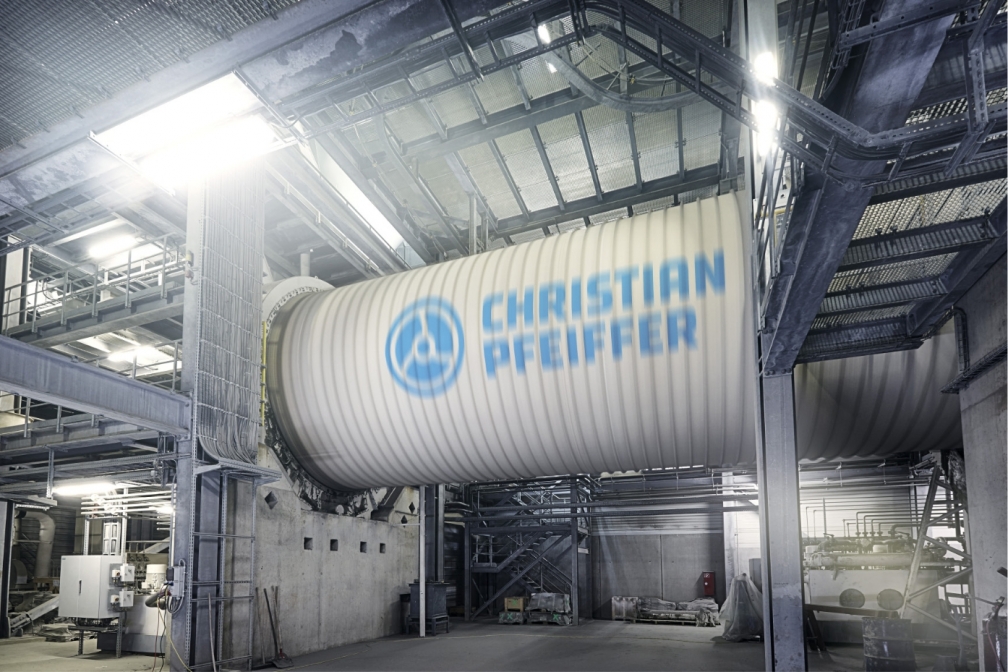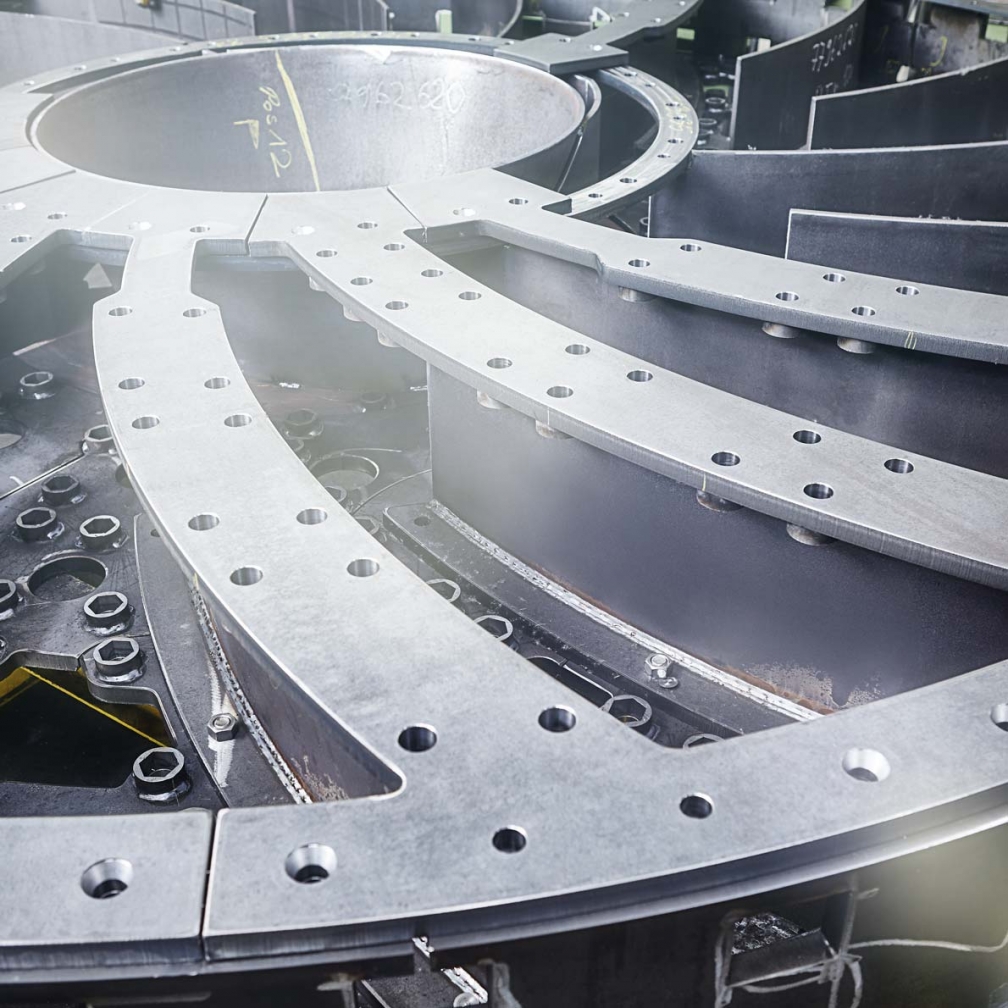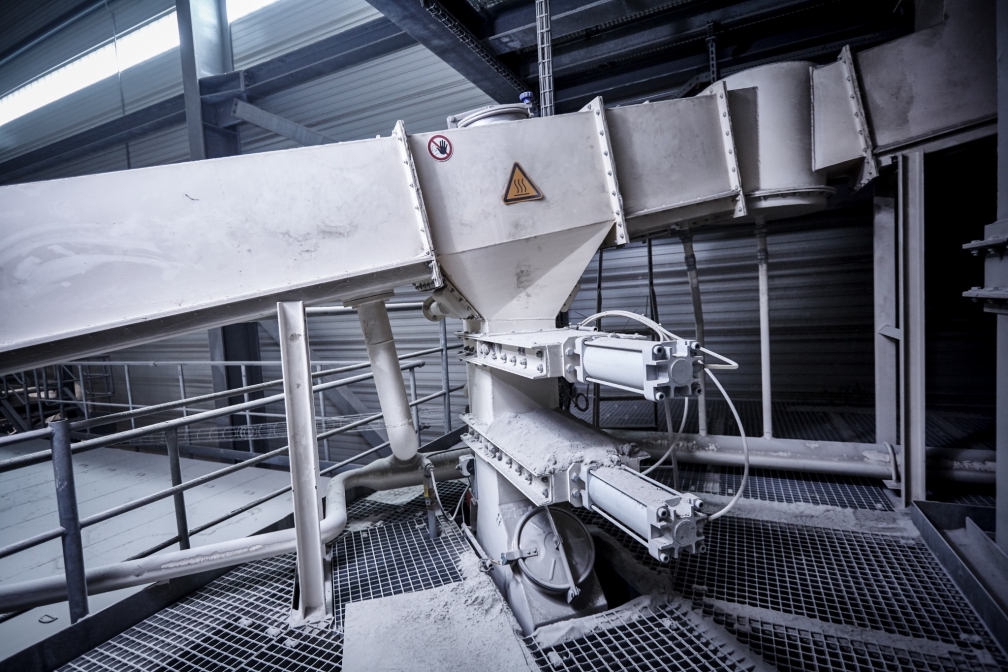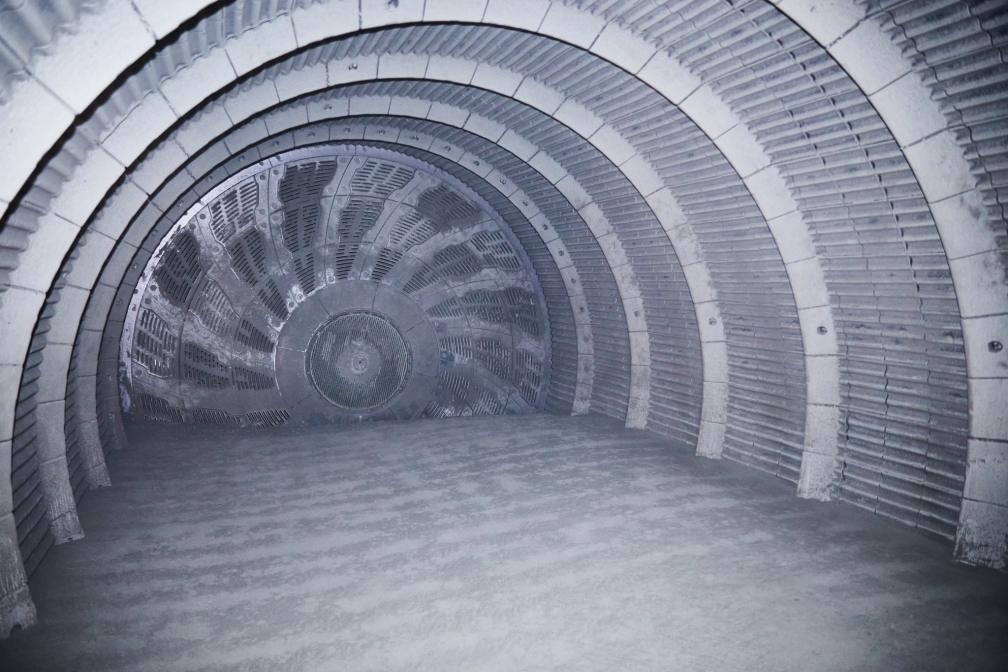
Compact spiral
lining
Shell lining For the long 2nd grinding chambers or single chamber mills
The compact spiral lining is mostly used in mono-chamber mills, or mills with a long second grinding compartment. The large number of progressive activator plates means that the ball load is moved optimally. The plow plates increase the energy transfer once again, creating a certain moderate sorting effect for the grinding balls, which improves the grinding power inside the ball charge.
Technical details
- Designed for mono-chamber mills and mills with a second grinding compartment
- In comparison with conventional linings, there is a higher energy transfer per ton of grinding balls as a result of the balls being mixed: The periodic interruption of a pure rolling movement by the grinding balls through the plow plates improves the grinding effect of medium-sized particle sizes
- Because of the spirally arranged plow plates for this lining version, a completely drilled mill cylinder is definitely required.
- A combination of two types of lifter plates is possible, with wave liners or low lifter plates


more than 500
mill shell linings
installed worldwide
Aren´t shell linings just wear parts for mill tube protection?
From our point of view, quite the opposite. The profiling of the shell lining plates creates the movement of the ball charge, which causes the grinding of the material. It is therefore essential for effective grinding in the mill and far more than just a wear part. The exact profile shape has to be defined depending on the ball sizes used, the rotation pace and the mill diameter. And thus, the shell lining has to be adapted to each mill individually.
Why do shell linings have different chromium contents?
The plates of the shell linings must not break during operation. If rough operating conditions are to be expected, a hard facing with a lower chromium content should be used. The chromium content often influences the service life of the hard facing, but not always. The ideal selection of the casting material is part of the standard of our machine and plant design. The design depends on the individual application conditions.
What is the best fastening system for the shell lining?
Any hole on the mill shell weakens the shell structure and is a potential leakage point. In addition, noise emission during operation is increased. Nevertheless, each type of fastening has its justification.
For coarse grinding in the first chamber, we prefer screwed solutions for DIN plates to ensure maximum availability and operational reliability. Alternative systems, with few or without screws, are used for fine grinding chambers.
Get your 360°Mill Check now!
The elimination of bottlenecks can lead to significant energy savings.
Let's find your bottlenecks.


AT YOUR SITE. WITH SERVICE EXCELLENCE FOR NEW AND EXISTING PLANTS.
Precise analysis for the perfect result.
We analyse your product to design the most efficient grinding plant.
- Technology center for material tests
- Laboratory for material analysis


Effizienz in der vermahlung ist unsere vergangenheit und unsere zukunft.
Seit 1925.
Mahlprozesse so effizient wie möglich zu gestalten, ist eine Wissenschaft für sich - eine Wissenschaft, der wir unser ganzes Know-how und unseren Innovationsgeist widmen. Von der Erfindung des ersten Übertragtrennwand MONOBLOC zur Perfektionierung des QDK-Sichters. Wie wir wurden, was wir heute sind.






